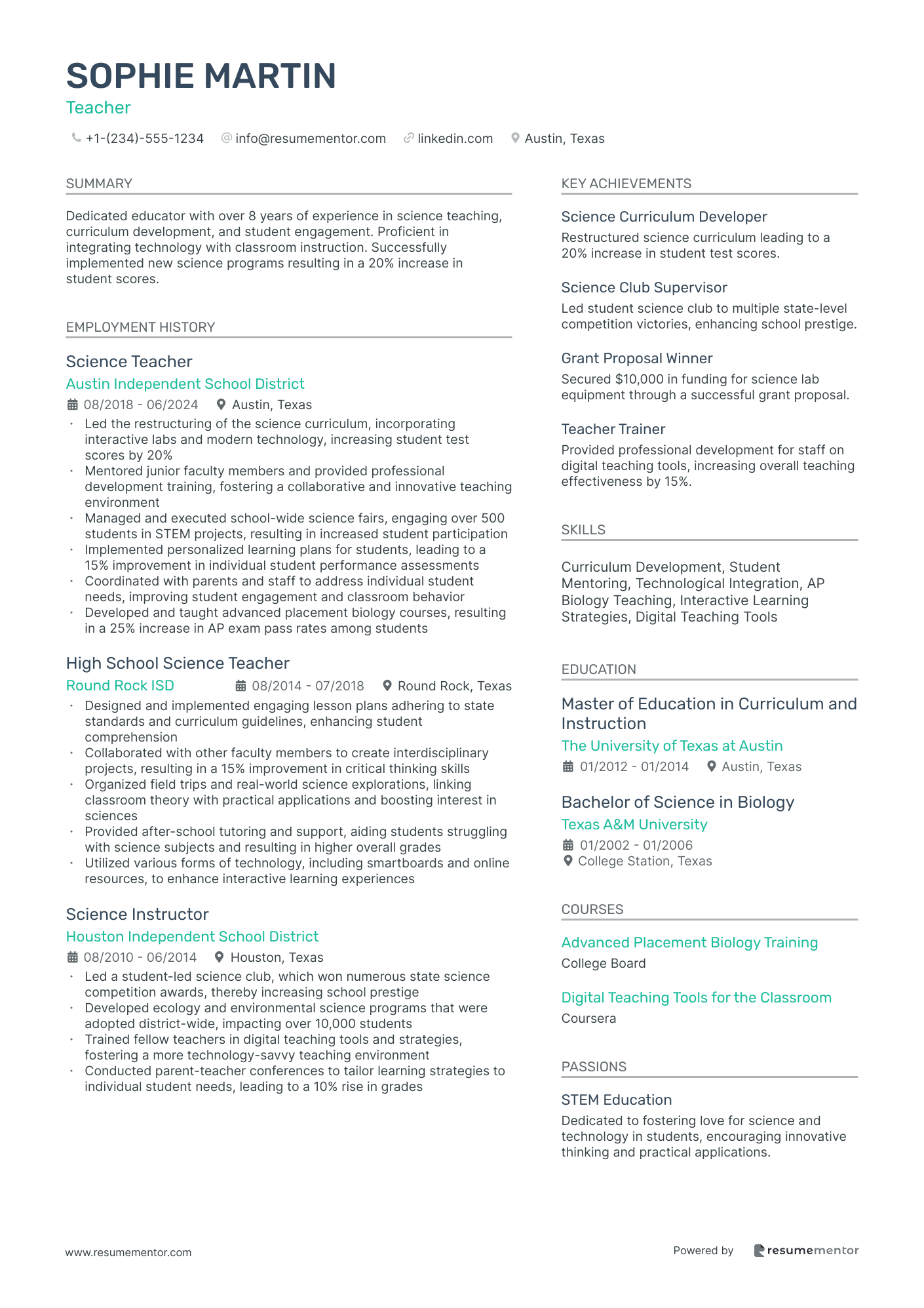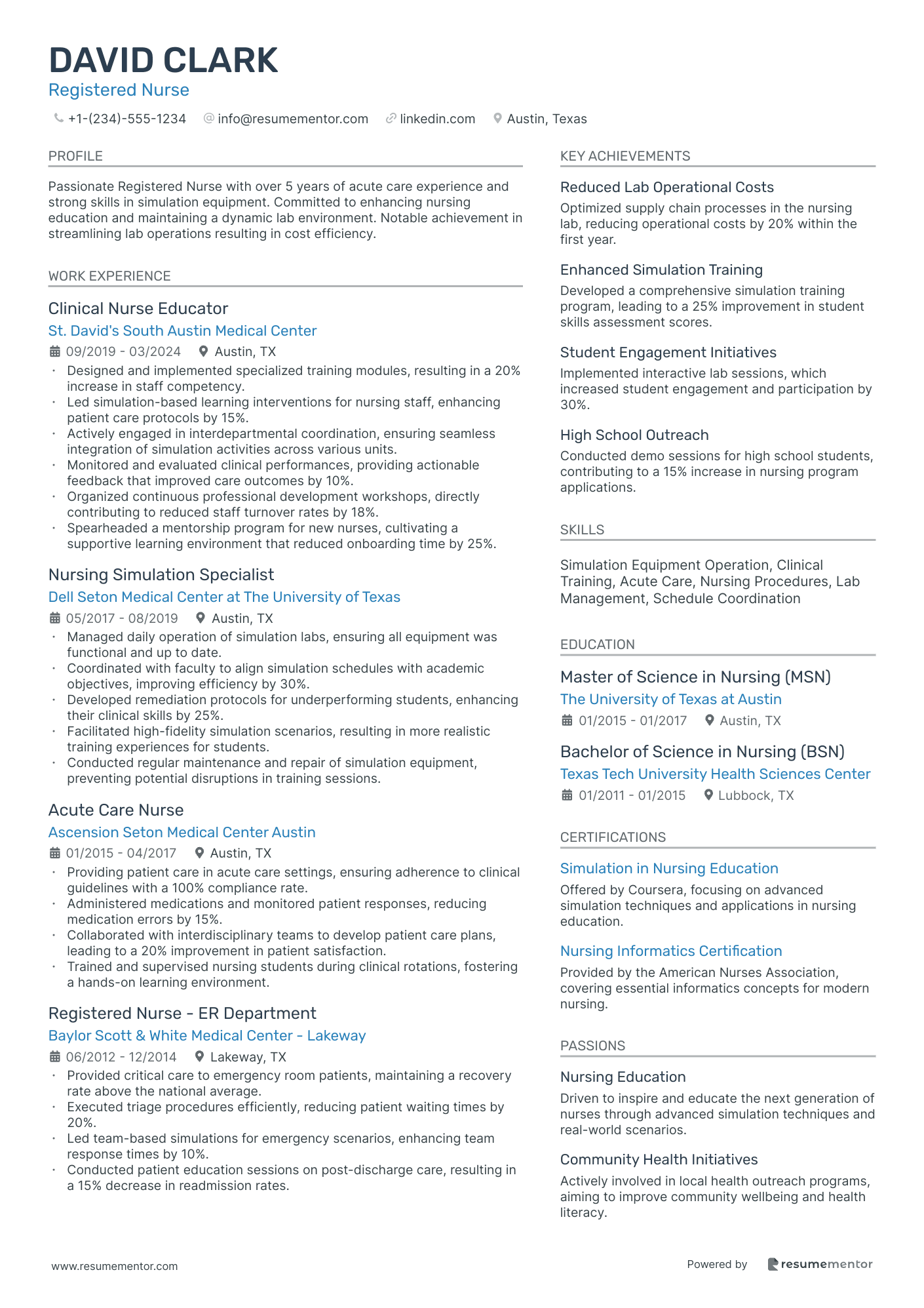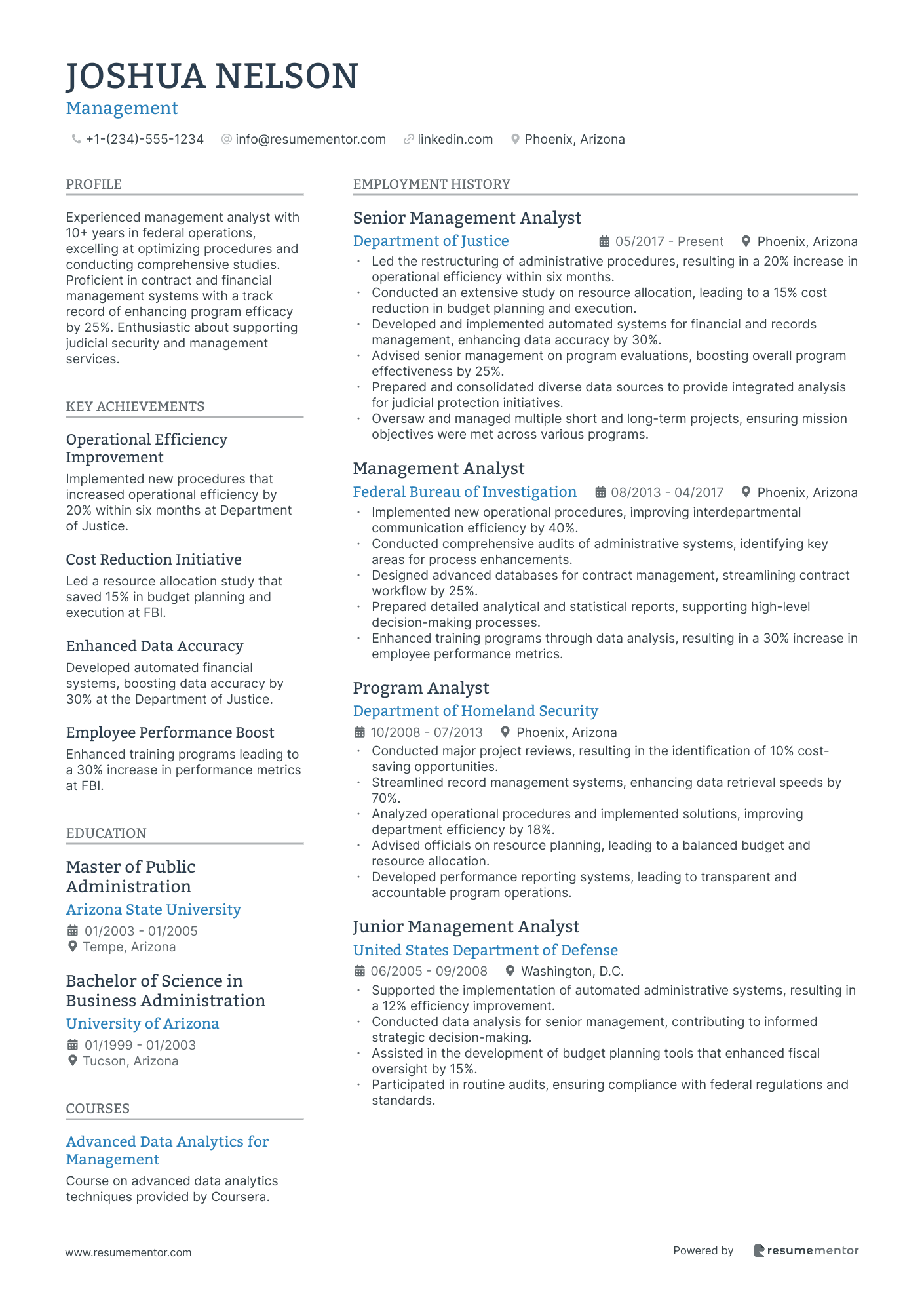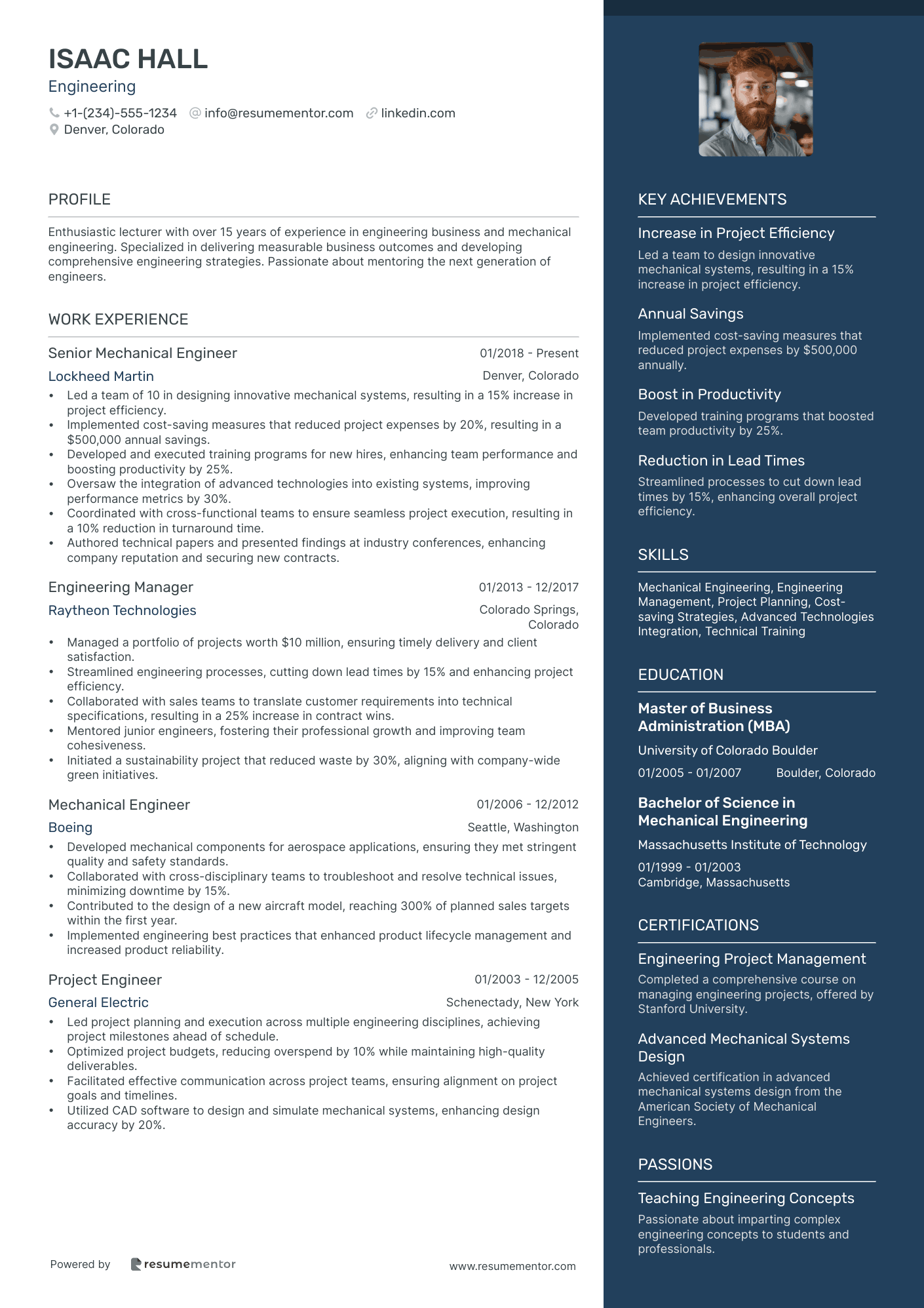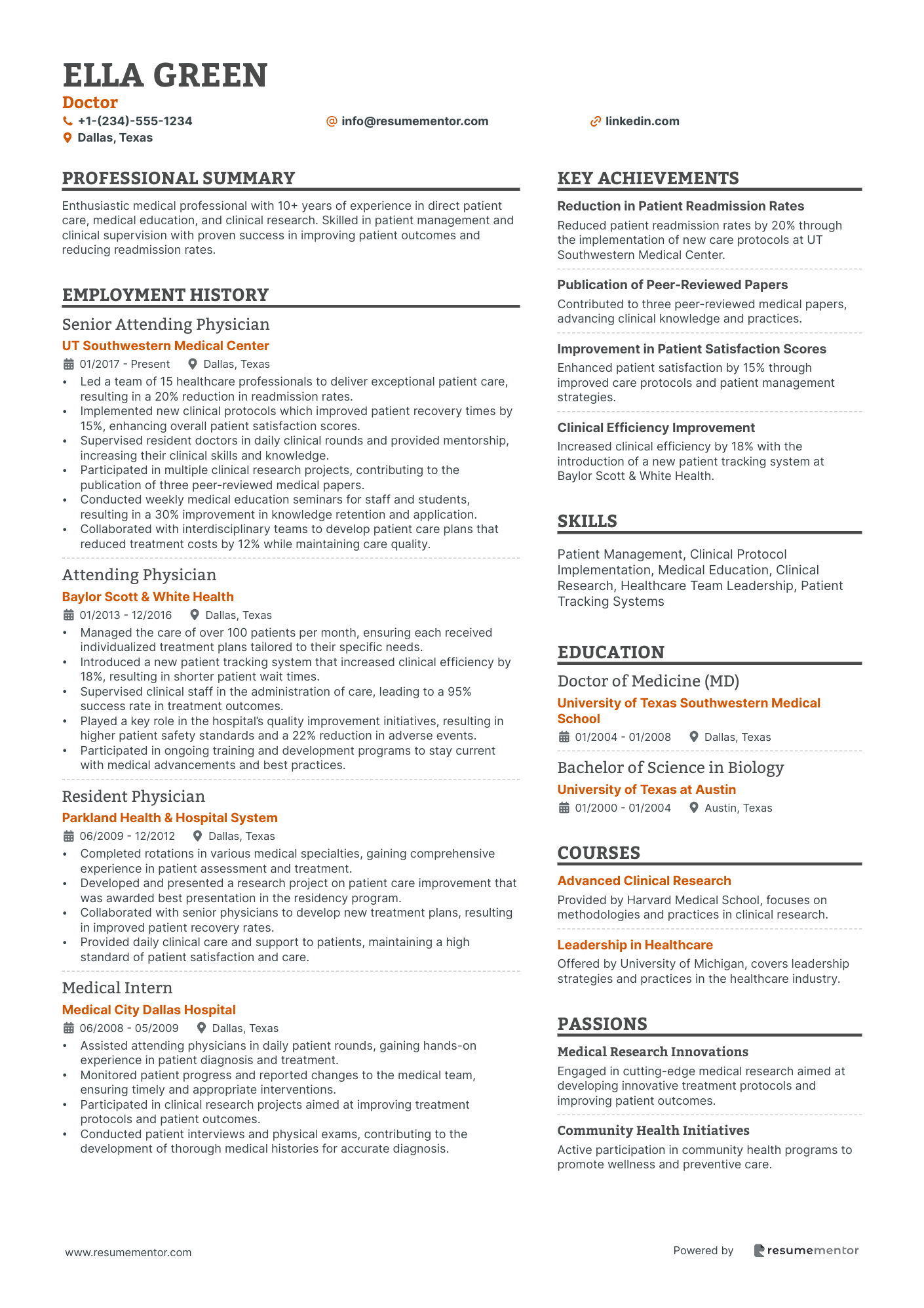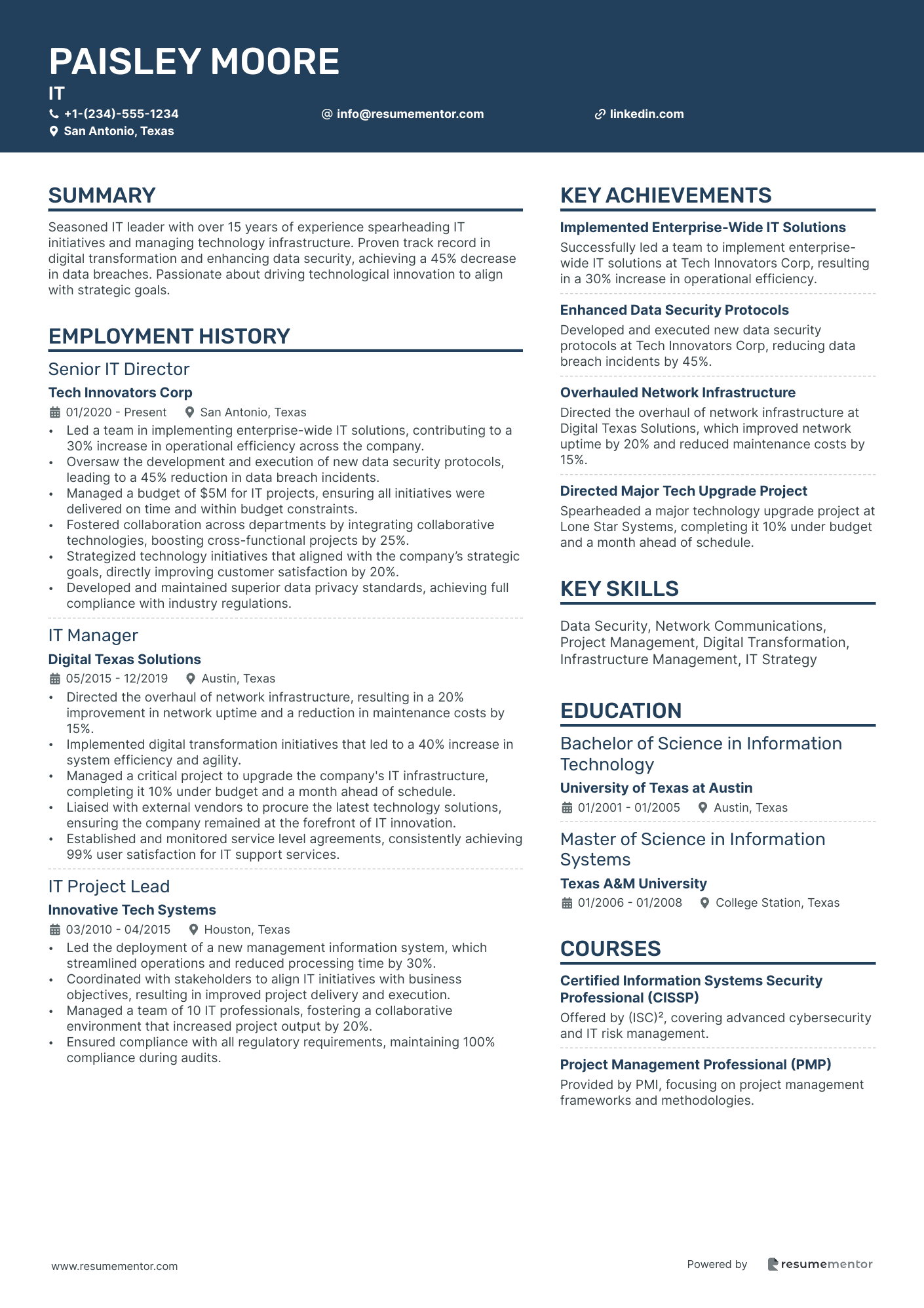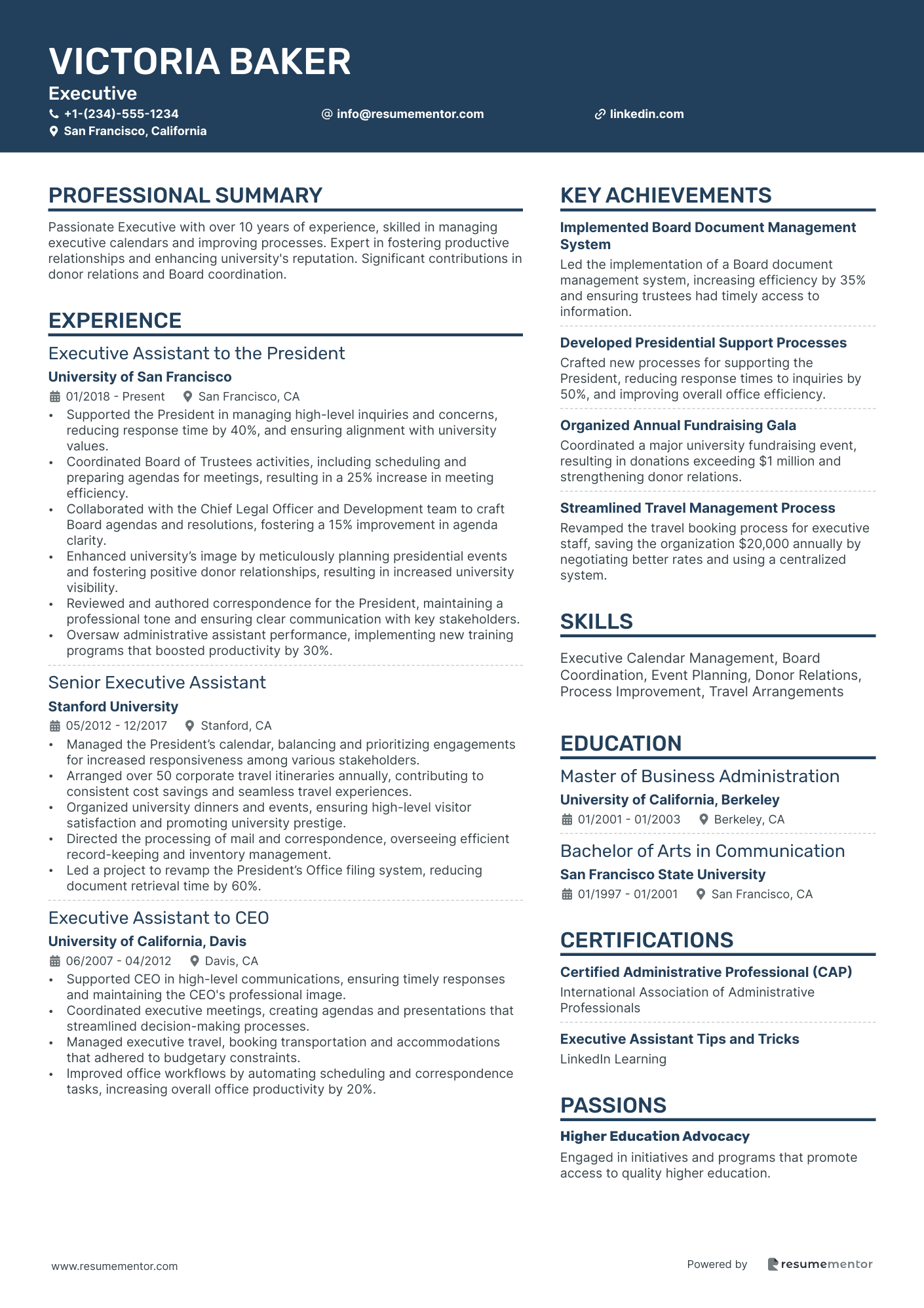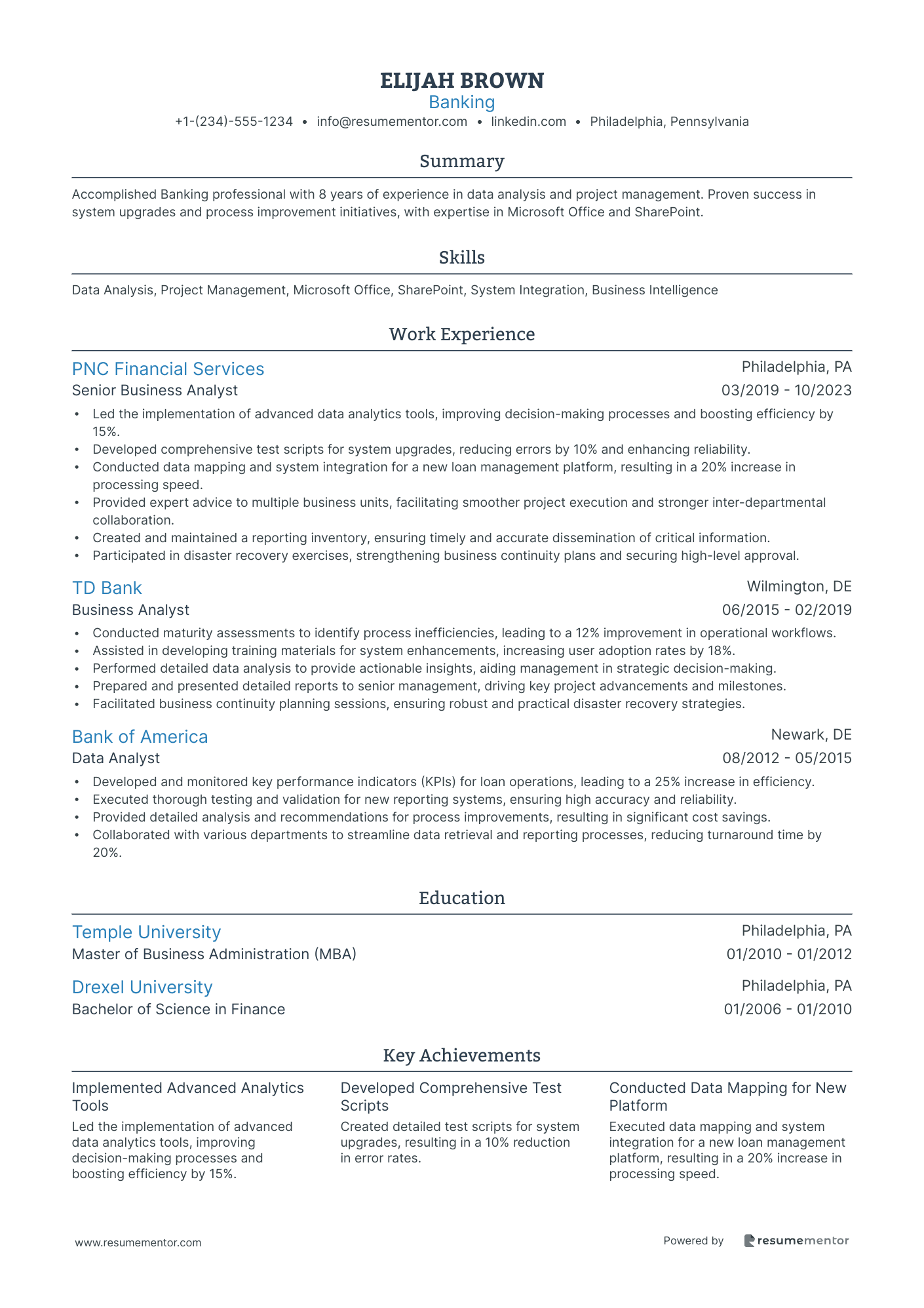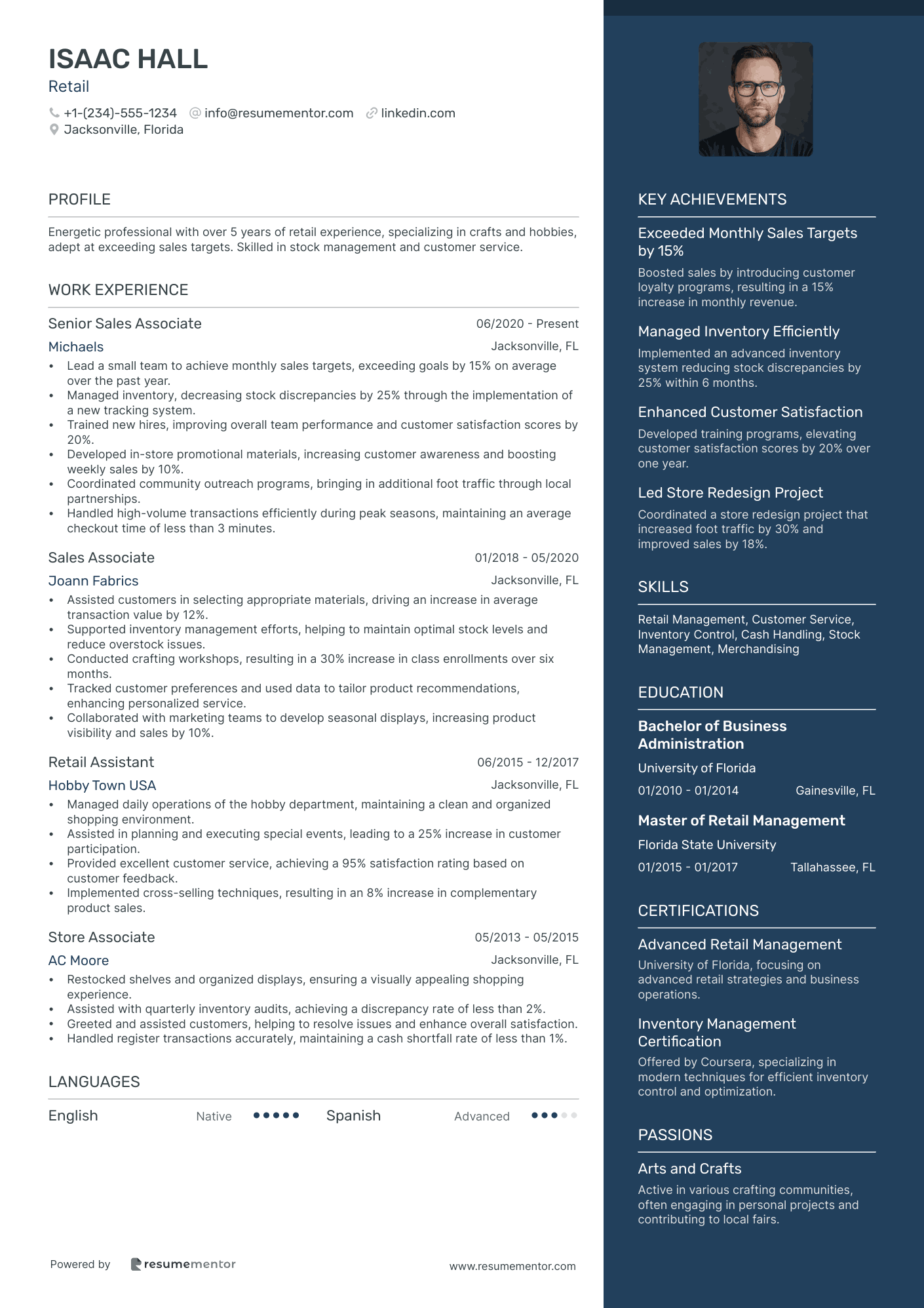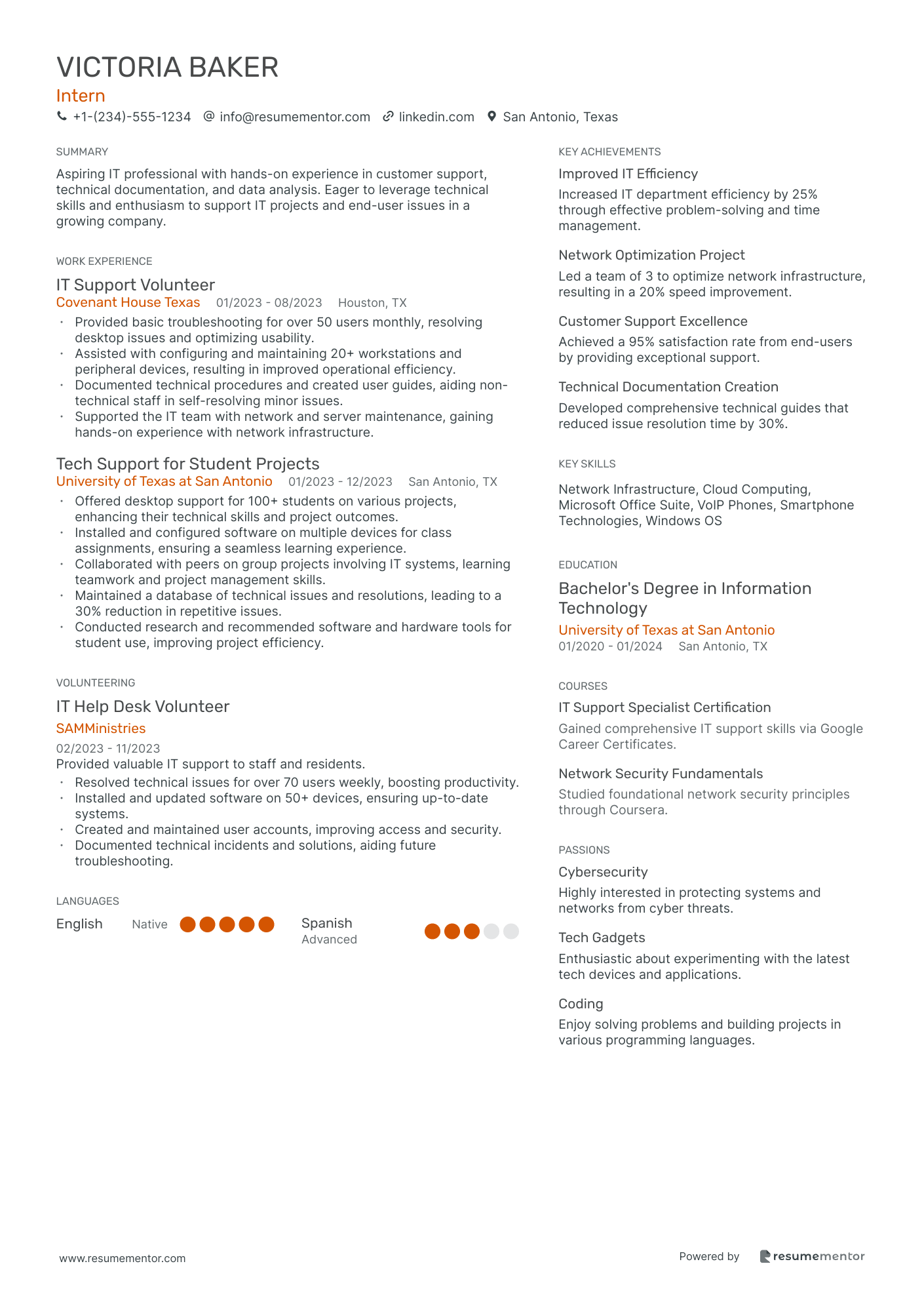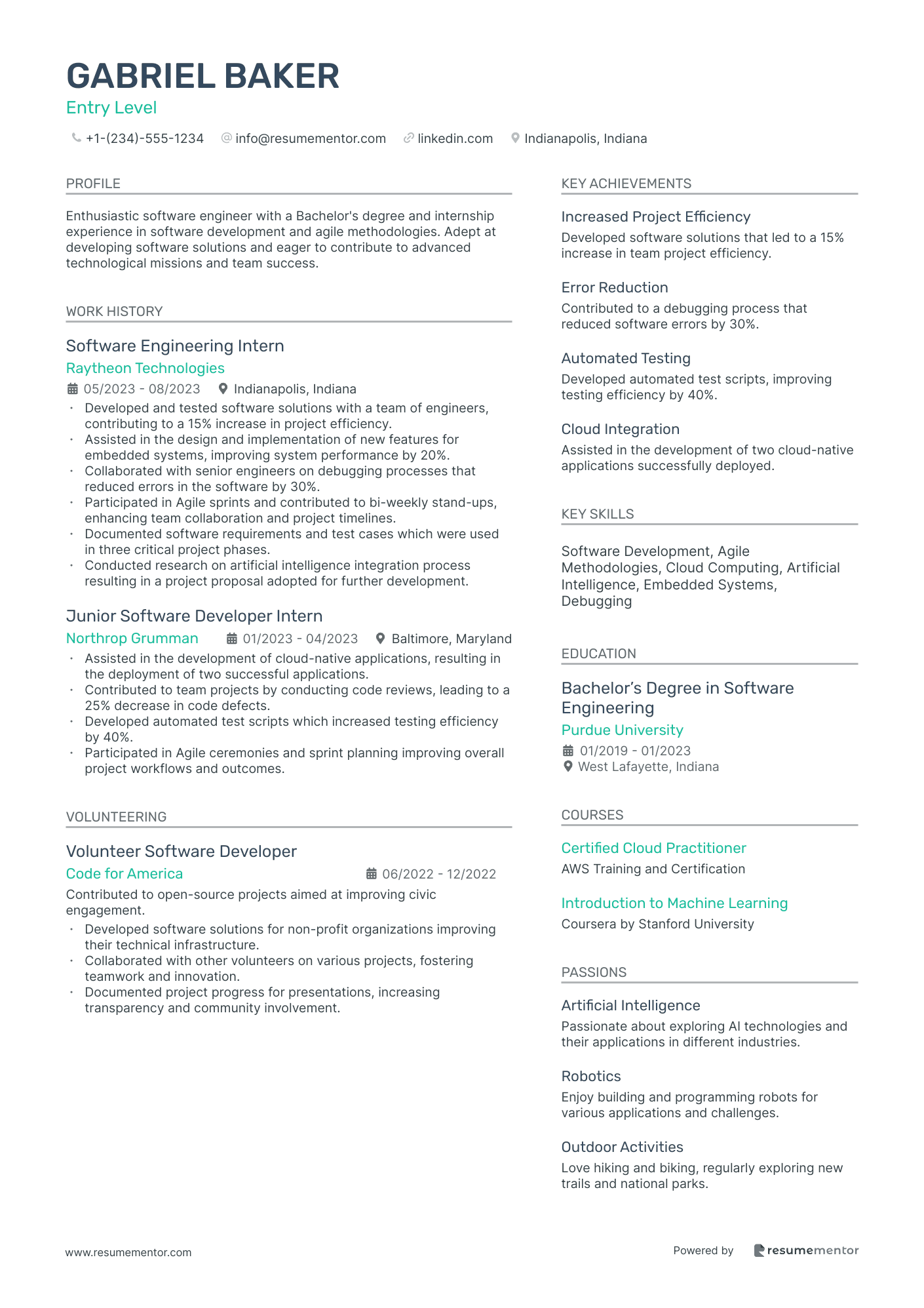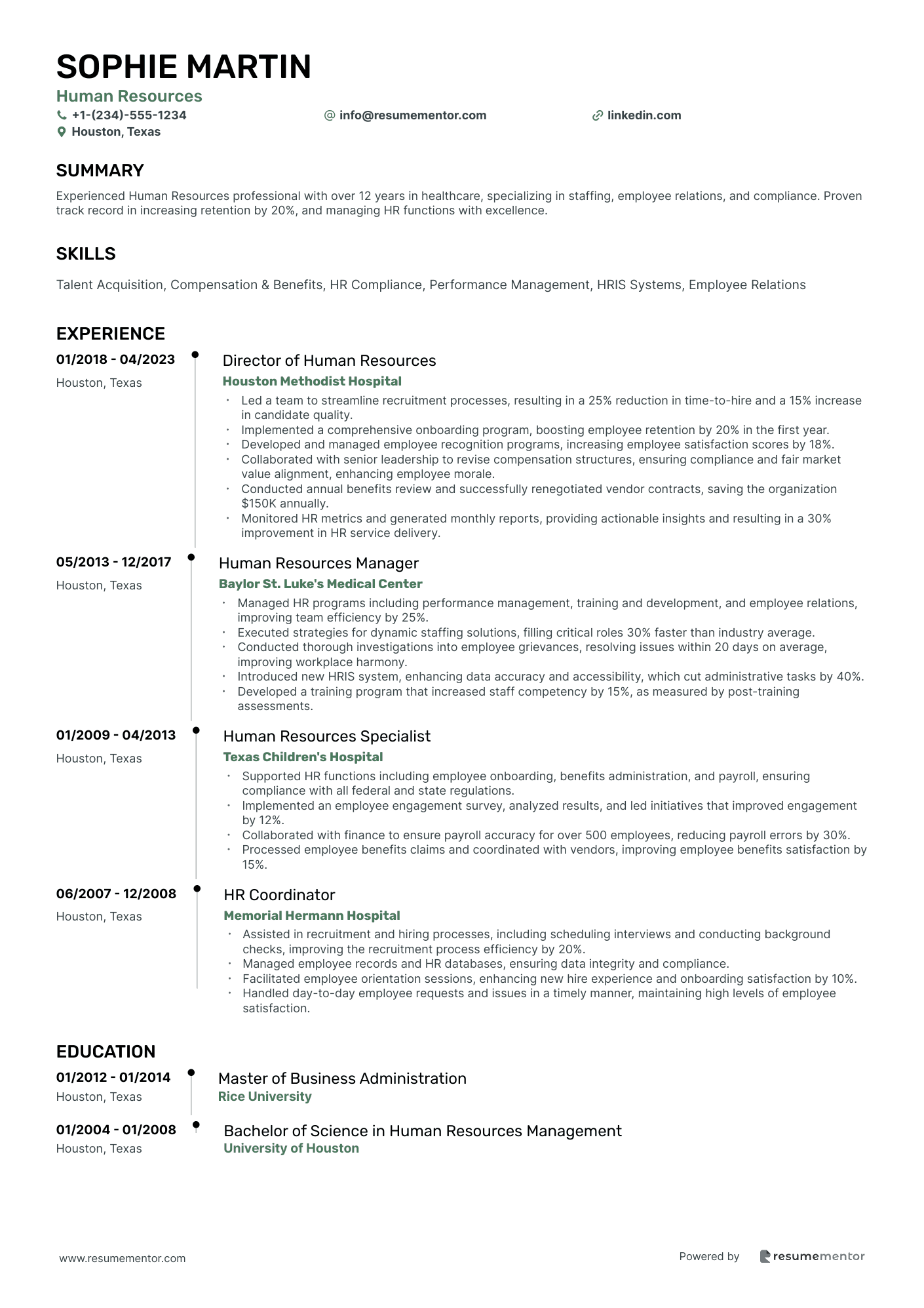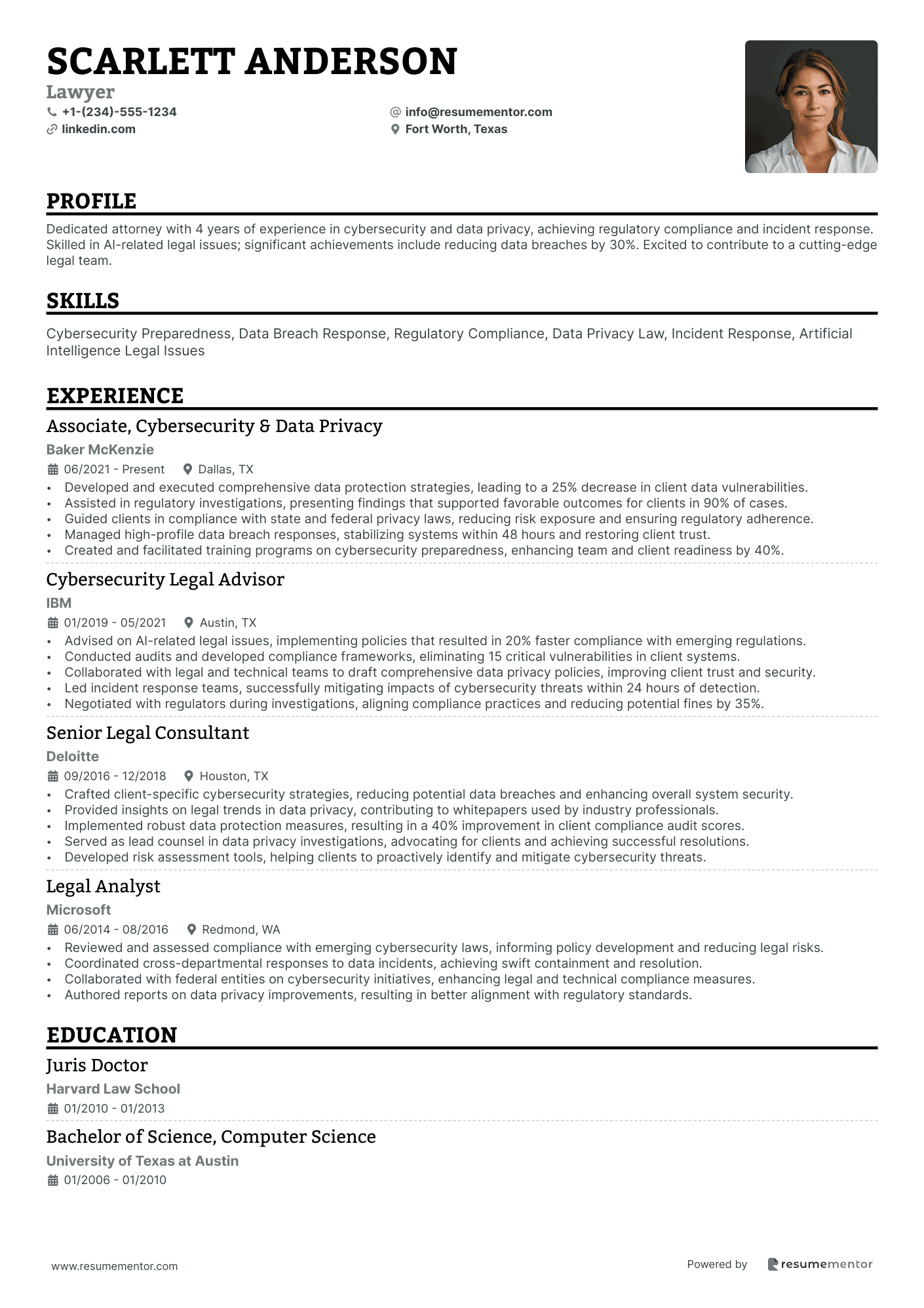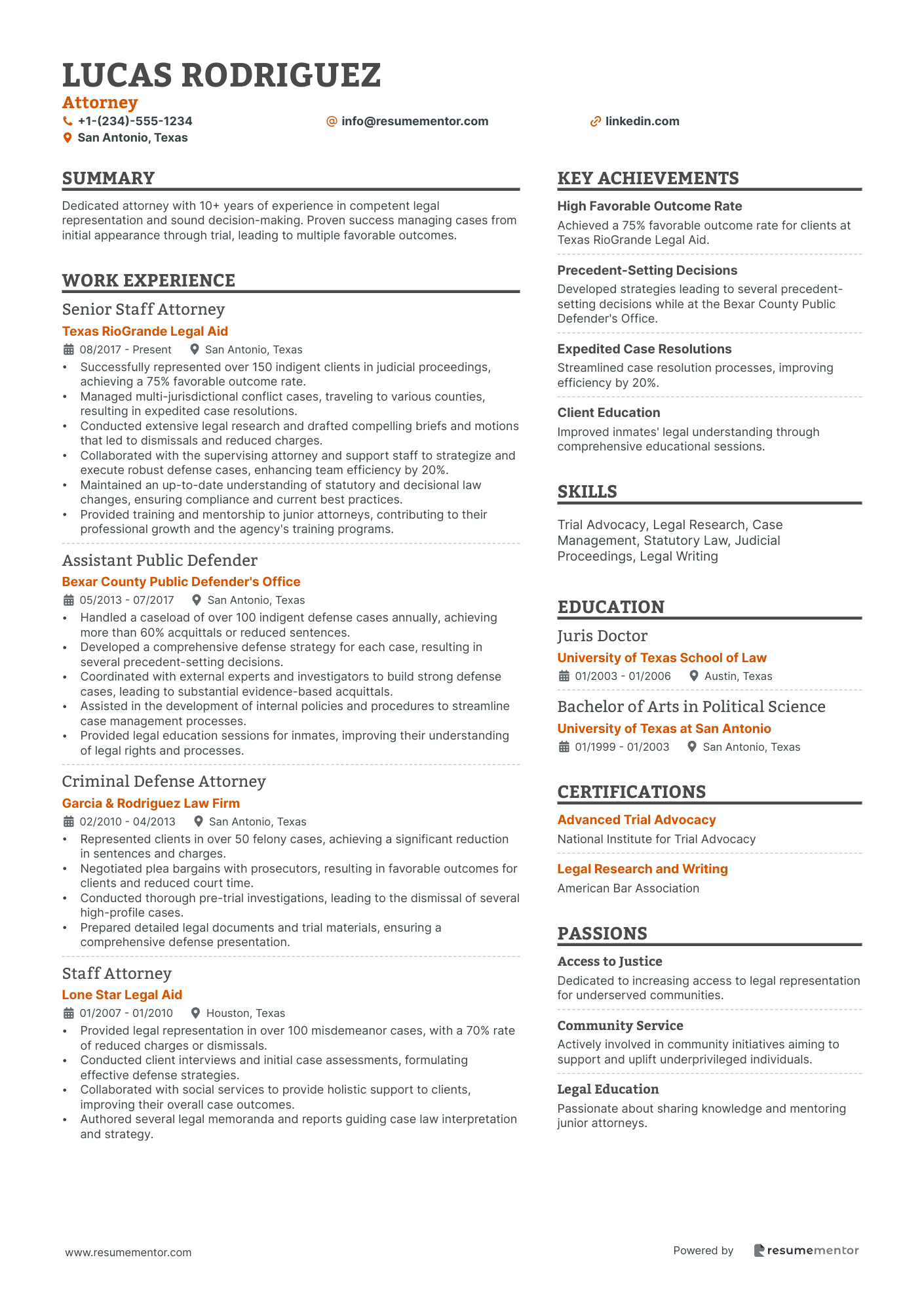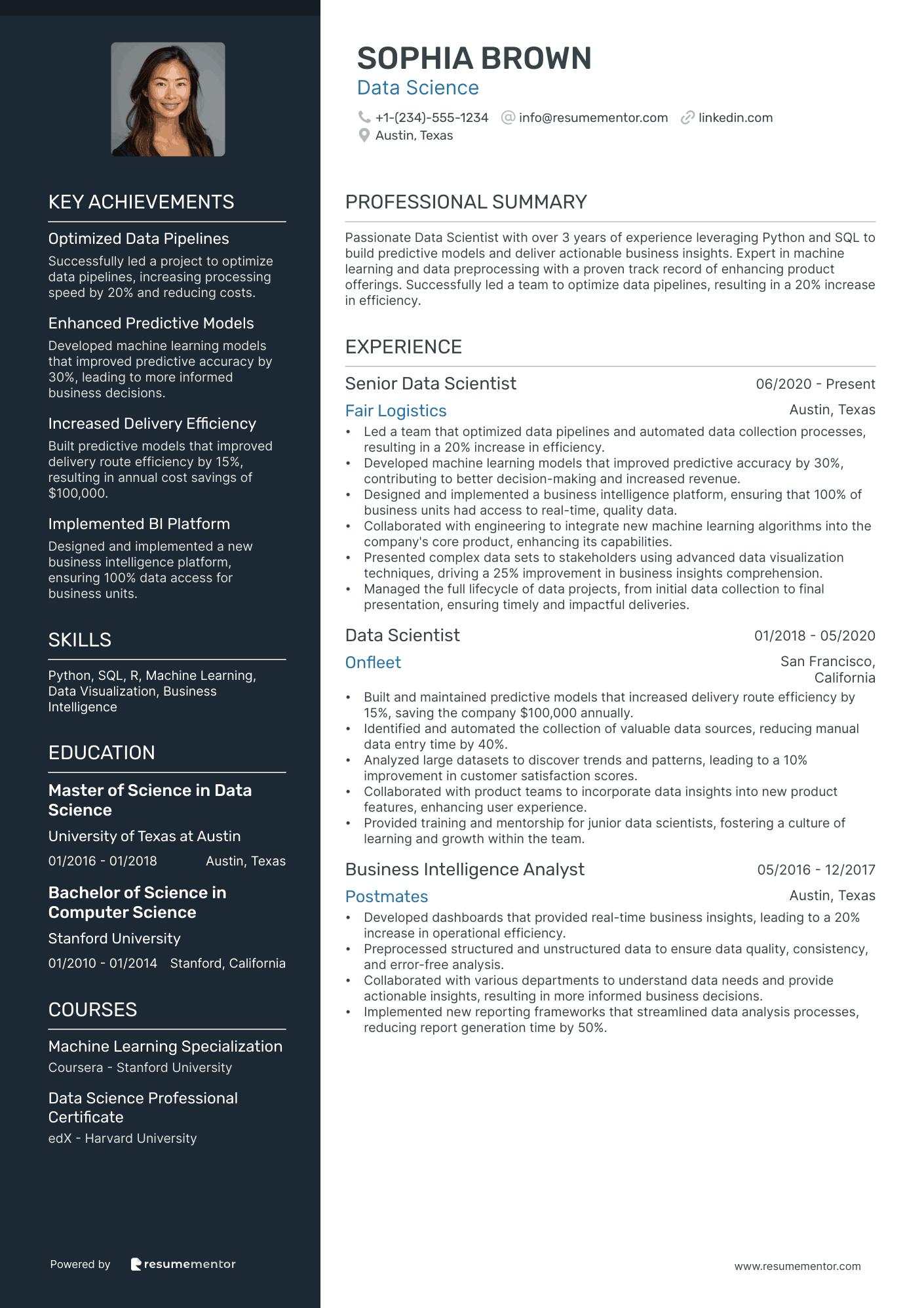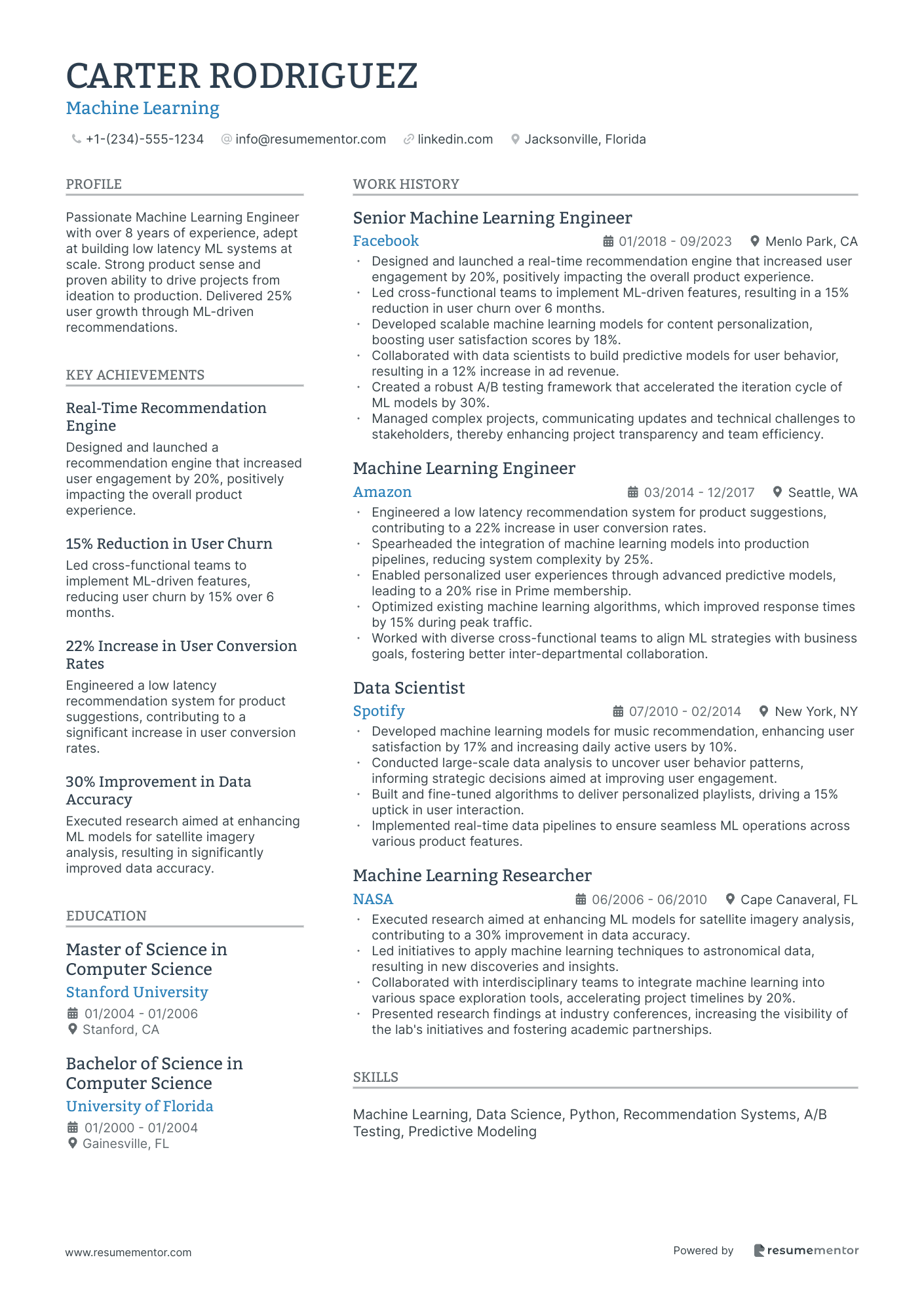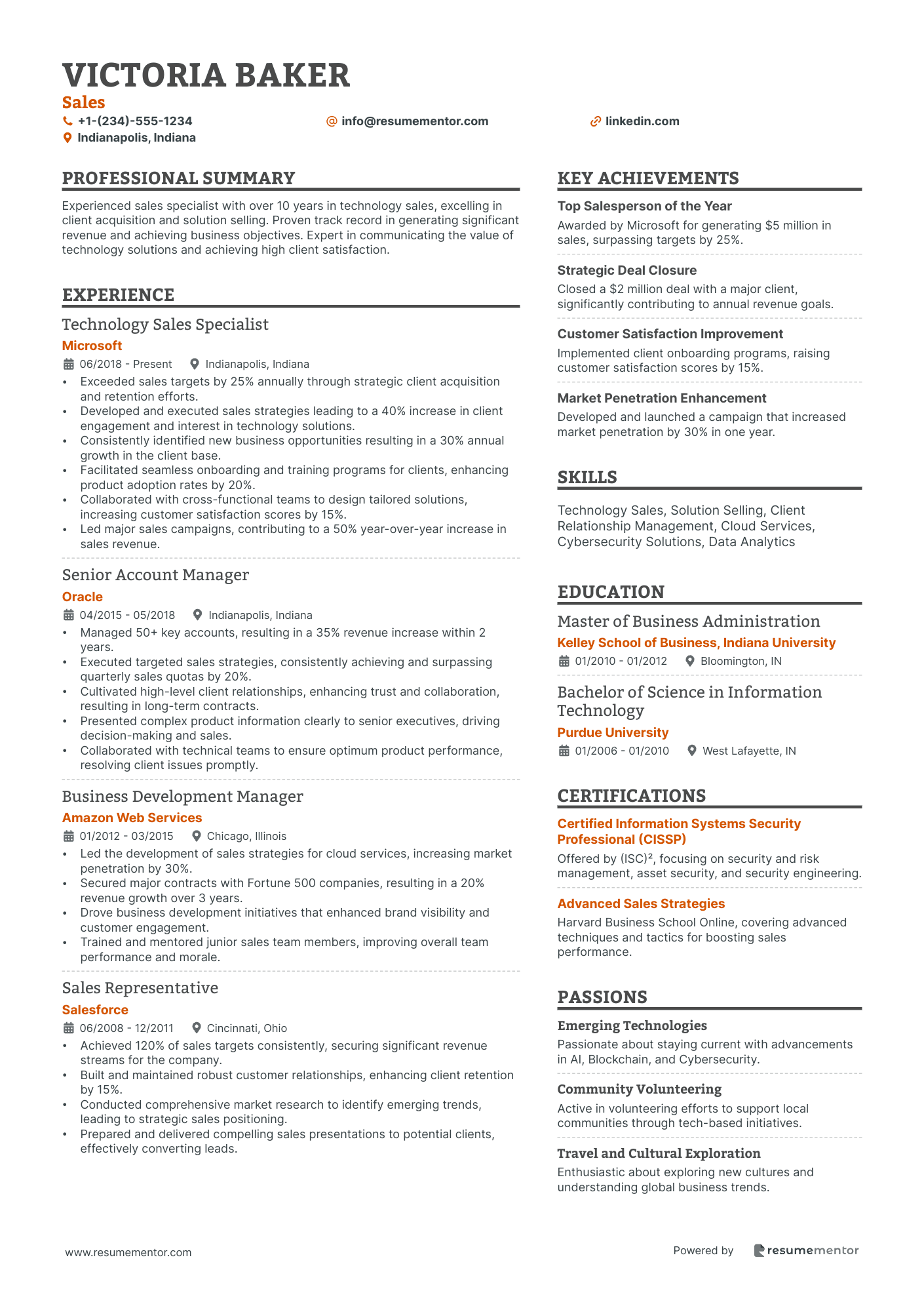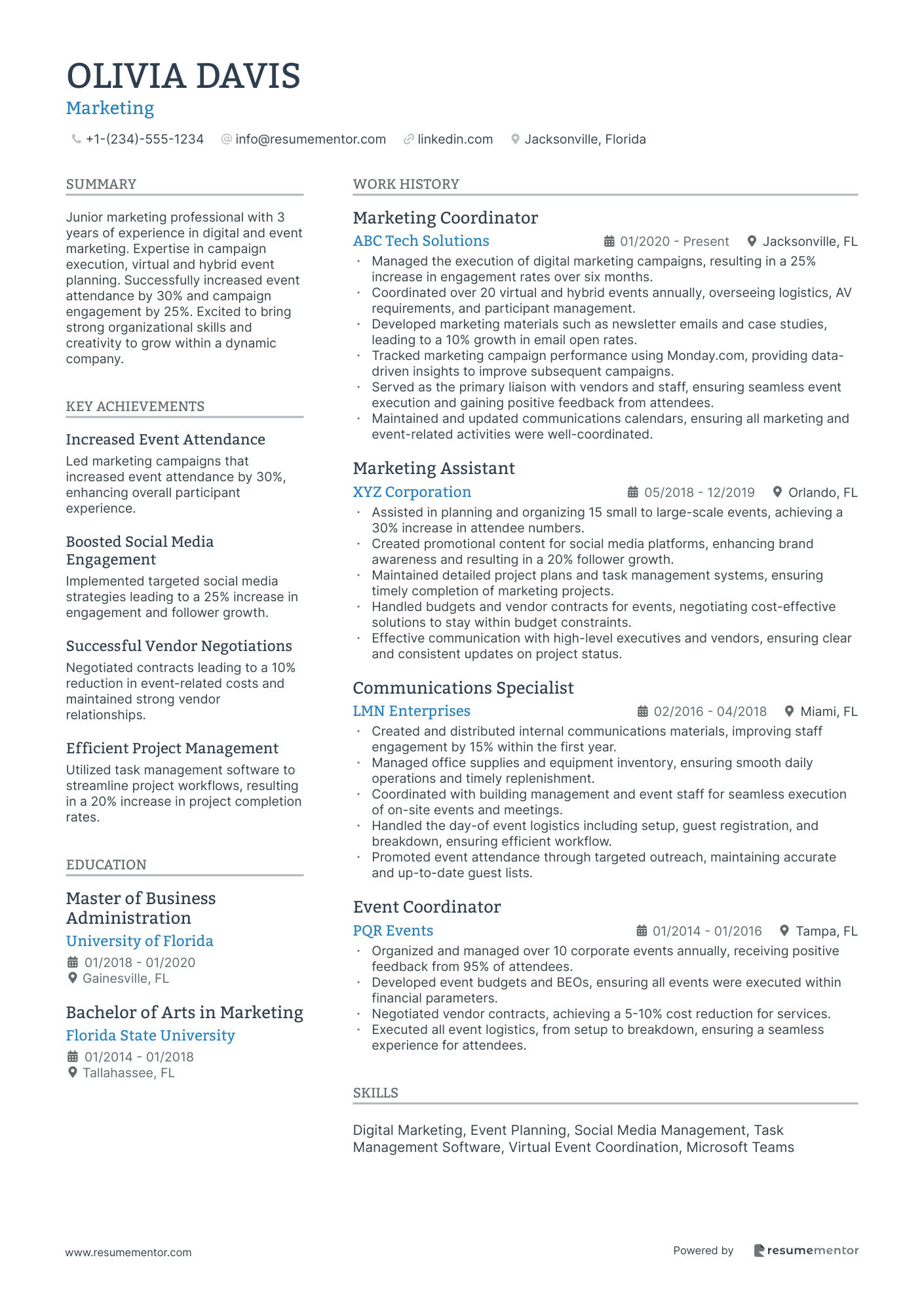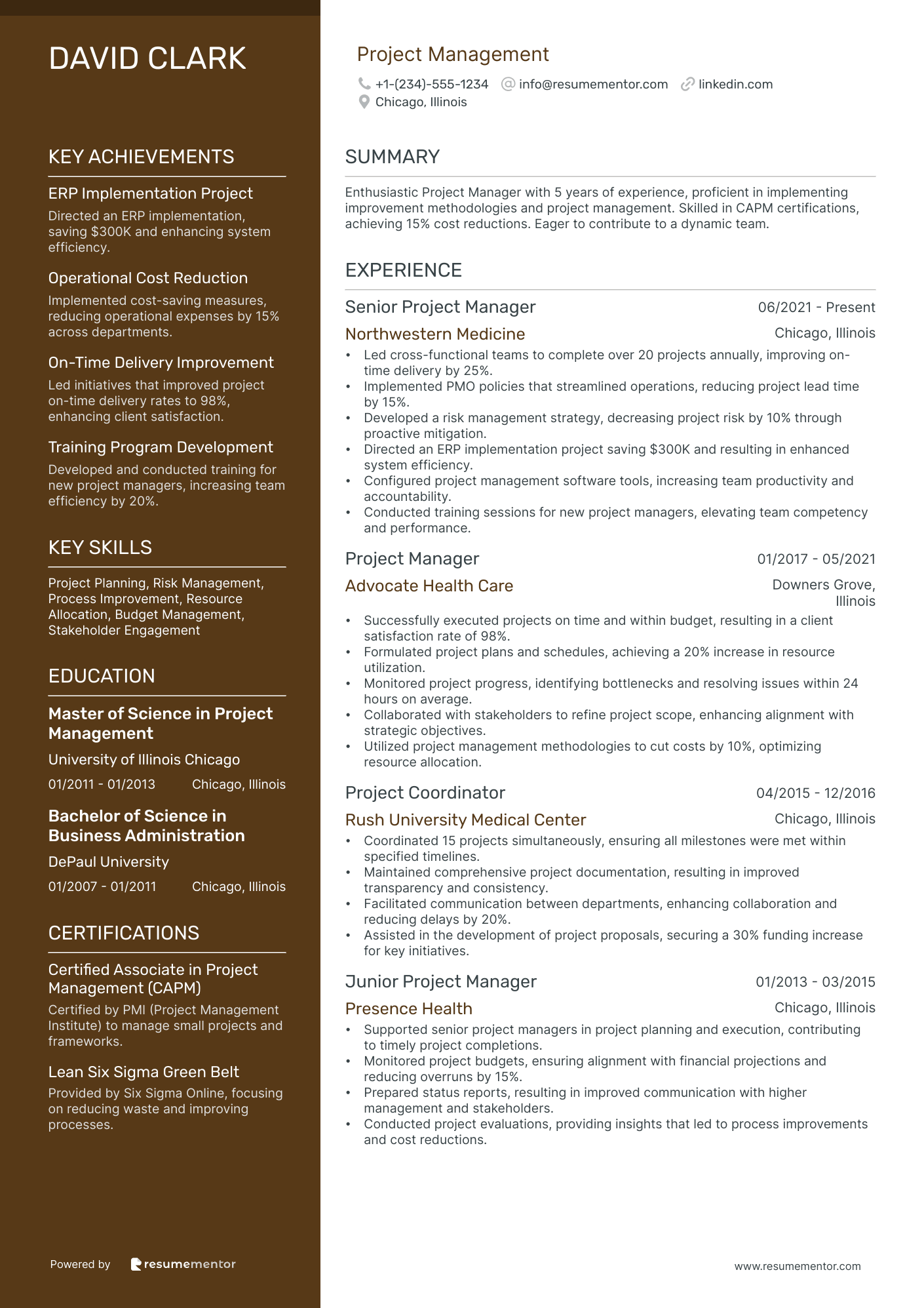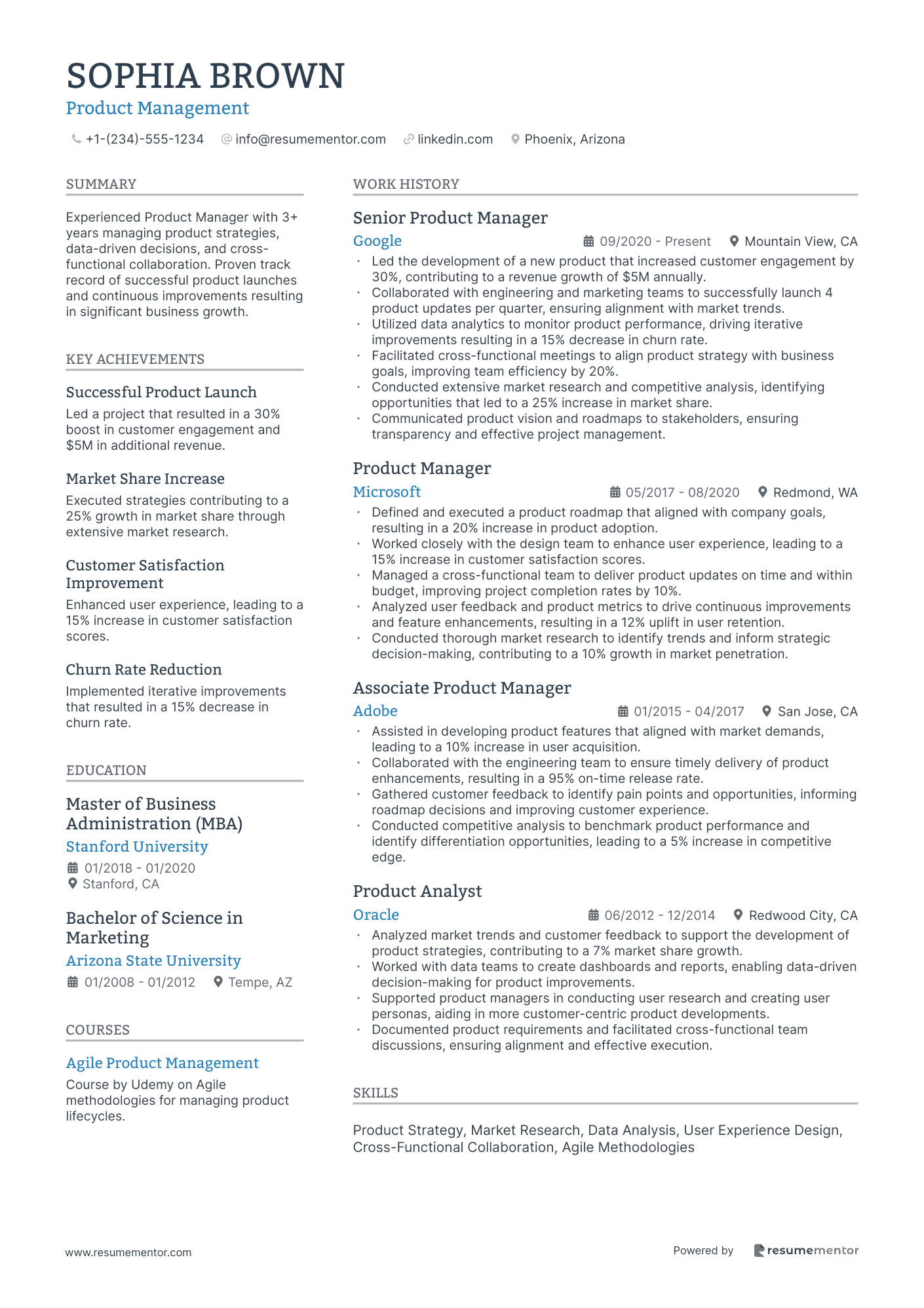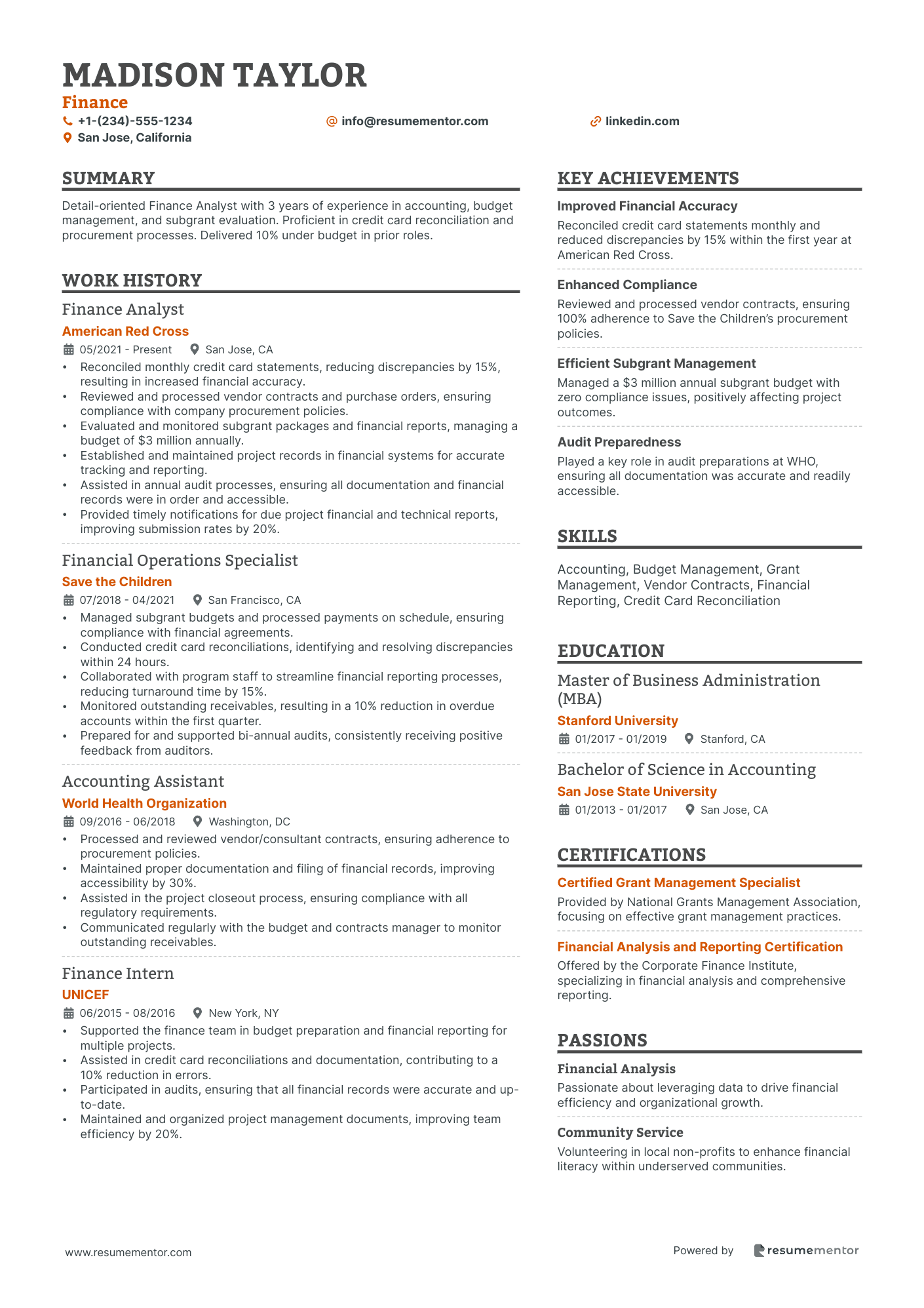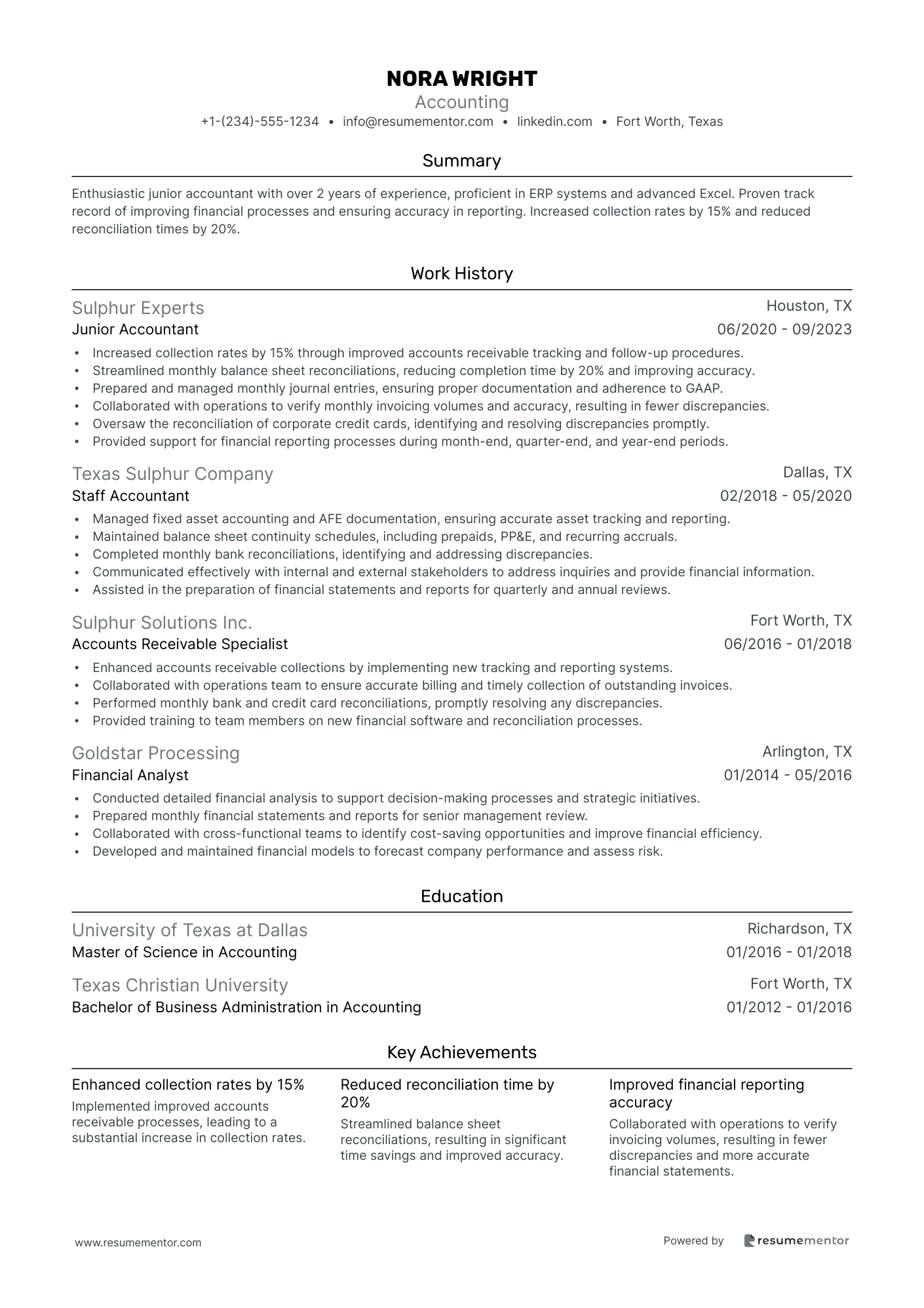Resume Header: Examples and Guide for 2025

Aug 23, 2024
|
12 min read
While it may not be the most exciting resume section, it’s essential that you get this right!
Hiring managers spend just seven seconds reviewing resumes. In that short amount of time, they need to gather all of the information they need from your application. One of the first things they’ll see is your resume header—a short section that contains vital contact information.
To increase your chances of landing a job interview, you need to make this section easy to read. Position your details clearly so the hiring manager doesn’t have to work hard to find them. In this guide, we cover everything you need to know about creating the perfect resume header.
Key takeaways
- Showcase your essential information at the top of your resume in the header.
- Include optional extras to make your application stand out from the crowd.
- Avoid including irrelevant information or links within your resume header.
- Perfect this part of your resume and you’ll be off to an excellent start.
What is a resume header and why do you need it
A resume header is a vital part of your application as it’s often the first thing readers will see. This short section includes your basic details and contact information. That makes it easy for the hiring manager to reach out to you if they’re impressed by your resume.
Take a look at our example below:
The above resume header example is simple and straight to the point. Now, let’s break down the main elements you need to include in a successful resume header section.
Things to include in your resume header section
If you’re not sure where to begin, we have you covered.
There’s a simple resume header template you can follow, including:
First and last name
Your full name is the first thing you need. That is, your first name and your last name, for example, “Mary Smith”.
If the professional name you use isn’t the same name that’s on your birth certificate, don’t panic. You can use a nickname, a chosen name, or a middle name, instead. However, there’s one important caveat.
The name you use in your header must be the same as the one you use on your cover letter. You should also ensure it matches your LinkedIn profile and your email signature.
What if your name is your brand too?
Job title or resume headline
Next up, you have two options to pick from:
- Job title - If you’re listing your job title, keep things simple. As a golden rule, you should use the job title of the position for which you’re applying. It’s a quick way to show the hiring manager that you fit the bill.
- Resume headline - A resume headline provides more context and details about you. This one-liner is, essentially, a marketing copy about why you’re the perfect candidate. The brief phrase should grab the hiring manager’s attention. It includes your job title but also your biggest achievements.
Choose the right approach for the business
Email address
You’ll also need to include your email address in your resume headline.
Let’s take a look at some of the rules you should follow here:
- Don’t include a quirky or unprofessional email address such as ilovetaylorswift@email.com.
- Do use a clean email address such as one that includes your first and last name.
- Don’t forget to check if your email is correct before writing it.
- Do use the same email address whenever communicating with a potential employer.
You can simply write your email address into the header of your resume. If you’re creating a PDF resume, make the address a hyperlink. That way, the hiring manager can click it and instantly email you.
Phone number
Below your email address, include a phone number. It can be either your home number or your cell. However, be sure it’s a number you use regularly. You don’t want to miss the hiring manager’s call!
If your phone has an answering service, you should check this. You want to make sure the message the hiring manager hears is suitable.
Web address
If you have a professional website or a LinkedIn profile, now is the time to include it. Write the address in your resume header and, once again, make it a hyperlink if you’re using a PDF format.
Make sure your LinkedIn is up to date!
Physical address
And finally, you need to include your physical address. Contrary to popular belief, you don’t have to include your entire address. Instead, you can just list your city and state here.
Optional details to make a stand out resume header
Want to make your resume header stand out from the crowd? It’s all about perfecting the design and look of this section. Luckily, we have you covered.
Here are three things you can add to bolster it:
Profile picture
There are times when including a profile picture on your resume is a smart idea. In some industries—such as modeling and acting—you need to include a headshot on your application.
In other cases, you may want to avoid it. American companies have to follow strict guidelines from the U.S. Equal Employment Opportunity Commission (EEOC). Having a headshot on a resume highlights a candidate’s sex, race, or age, which can open up potential discrimination. The UK and Canada have similar laws when it comes to discrimination.
However, there are certain countries where including a profile picture is common. This includes some parts of Europe (i.e. Spain, Austria, Belgium, Germany, and Portugal). Hiring managers in South America and some parts of Asia may also expect you to have a picture on your resume.
Larger font size
Looking for a speedy way to emphasize part of your resume header? Using a larger font size is the answer. For instance, you may choose to write your name in a larger typeface, such as 14 or 16 pt, than the rest of your details. This approach instantly draws the reader’s eye to your name, making it more memorable.
Bold text
Similarly, you could choose to use bold text within your resume header. This has the same effect as making some of the text larger. You can use it for your name or job title, for example. Above all else, you need to make sure the style of the resume is consistent throughout the whole document.
Things to not add to your resume header
Now that we’ve covered the details you need to include in your resume header, let’s talk about what you should leave out.
There are a couple of things you shouldn’t list in this section:
Irrelevant website links
Sure, you can include your personal website and a LinkedIn profile link. However, avoid linking to irrelevant websites that do nothing to add value to your application.
Examples include:
- Your employer’s website
- Your Instagram profile (unless it’s a social media or PR role)
- Your blog (unless it’s a writing job)
- Your Etsy or eBay account
- Any site you don’t own
Whenever you’re tempted to include a website link in your resume header, consider why you’re doing so. What does this link tell the hiring manager about you? Do you really need to add it?
Irrelevant personal details
Resumes are professional documents and you only need to include essential details. There are some pieces of information that have no place here.
For example:
- Your date of birth or age
- Your marital status
- Whether you have kids
- Your nickname
The above details will simply clutter up your resume header. Save yourself time and space by not including them in this document.
20+ Resumes and header examples
Looking for some inspiration? Look no further. Now that we’ve covered the basic things you need to include in your resume header, let’s dig deeper.
Teacher resume header example
Teaching is a renowned profession where you’re expected to follow strict rules. So, your resume header needs to be traditional and linear.
Check out our teacher resume examples or take some inspiration from our header example:
Registered nurse resume header example
If you’re a registered nurse, landing your next job could be a mere click away. We have a range of registered nurse resume examples to help you master your application.
Manager resume header example
Are you a natural-born leader? If you have what it takes to not only manage but also inspire a team, it’s time to prove it. Use our manager resume examples to help you build your next application.
Engineering resume header example
Engineers need to get off on the right footing with the hiring manager immediately. Use our engineering resume examples to help you get ahead of the competition.
Doctor resume header example
Is there a doctor in the house? If you’re ready to land your next healthcare position, use our doctor resume examples to help you along the way.
IT resume header example
If you’re a technological whiz kid and you’re ready to find a new job, you need a simple resume. Check out our selection of IT resume examples before you get started.
Executive resume header example
Going for the top job? When you have your sights set on senior positions, you need to perfect the art of resume writing. You can use our selection of executive resume examples for inspiration.
Developer resume header example
The developer job market has never been stronger. Get your foot in the door with a well-written resume. Use our developer resume examples to give you the ideal structure.
Banking resume header example
Are you looking for a job in finance? If so, creating a professional banking resume could be the first step. We have a library of banking resume examples for you to use.
Retail resume header example
Finding your next job in retail doesn’t have to be challenging. Take a look at our many retail resume examples and use them to guide you.
Intern resume header example
New to the working world? If you’re looking to land your first internship, you need a resume that stands out from the crowd.
Check out our range of intern resume examples.
Entry-level resume header example
When you’re just starting out in your career, it’s never been more important to win over the hiring manager. You can do that by taking inspiration from our entry-level resume examples.
Human resources resume header example
If you work in HR, you already know the importance of a resume header. Use our human resources resume examples to support you in writing a stellar application.
Lawyer resume header example
Law firms are looking for candidates with a high level of attention to detail. Prove you have what it takes by creating a stellar resume. Use our lawyer resume examples for creative inspiration.
Attorney resume header example
Attorneys have one chance to make the right first impression. We have a wide selection of attorney resume examples to support your next application.
Data science resume header example
When you’re busy crunching numbers, it can be hard to set aside time to build a great resume. Luckily, we have a load of data science resume examplesfor you.
Machine learning resume header example
The demand for machine learning (MI) specialists is projected to grow by 40% between 2025 and 2027. Now is the ideal time to get your resume up to scratch. Take a look at our machine-learning resume examples now.
Sales resume header example
Your resume is the most important sales material you’ll ever create. Review our selection of sales resume examples to make sure you hit the mark.
Marketing resume header example
Writing a compelling resume is all about marketing your skill set and experience. See how we do that perfectly in our range of marketing resume examples.
Project management resume example
If you’re a pro when it comes to project management, it’s time to prove it. Take a peek at our project management resume examples and see how it’s done.
Product management resume header example
If you’re a product management executive, you need a resume that matches your level. Look at our product management resume examples now.
Finance resume header example
The financial sector is highly competitive. Show the hiring manager you’re destined for success with our selection of finance resume examples.
Accounting resume header example
If you have a mathematical mind, show off your expertise with a well-positioned resume. You can use one of our accounting resume examples to guide the way.
Frequently asked questions about resume headers
How to create a resume header in a Word document?
If you’re building your resume in Microsoft Word, creating a header can be tricky.
We suggest using the Tab button to insert a horizontal line above the rest of the content. This creates a visual barrier between your resume header and the rest of your resume’s information.
You can also insert a table and then make the borders invisible. This approach gives you the right structure to include a header at the top of the document.
To take all of the hassle out of the design process, use our resume builder tool instead.
Should I use a two-page resume header?
The choice is yours! Whether you’re building a digital or print resume, you can decide whether the header runs across both pages.
Keep in mind that digital resume samples pages will always be shown together (as one file). You can clip the pages of your resume together physically if you’re using a print version.
Whats the difference between a resume header, a resume headline, and a resume headings?
Don’t get confused by the terminology. Resume headers, headlines, and headings are three different things.
Let’s break them down simply here.
First, the resume header includes your name, job title, and basic contact details. There’s a right way to structure this information—as shown above.
Next, the resume headline is a single-line phrase that sells you to the hiring manager. It can include the following details to win over the reader:
- Your value (e.g. a skill, certification, or years of experience, essentially acting as a summary replacement).
- Your current or desired job title.
- Creative anecdotes or information.
- How much experience you have.
The aim of the game is to grab the hiring manager’s attention and show them why you’re ideal for the vacancy. Your resume headline should be short, snappy, and impactful.
Finally, resume headings are the words at the top of each section, such as “Work experience” or “Education”. They simply let the hiring manager know what to expect in each segment.
Learning the difference between each of these elements is a must. It means that you can easily navigate the design process and create a stunning document in no time.
Conclusion
Your resume header acts as a business card—sharing vital contact information about you. While it may not seem like the most exciting part of your application, it ‘s important. If you don’t get this part of your resume right from the start, it’ll lower your chance of landing an interview. Use the guidance we have shared here to create a superb resume header design for your document.
Related Articles

Continue Reading
Check more recommended readings to get the job of your dreams.
Resume
Resources
Tools
© 2025. All rights reserved.
Made with love by people who care.

